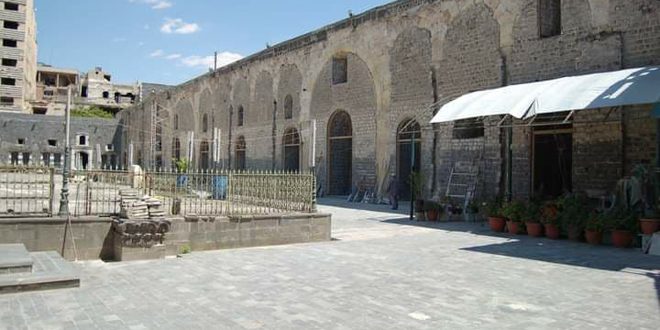Homs, (ST)- The inscriptions in the Great Mosque of al-Nouri in Homs have been a great source of interest to researchers and orientalists from the past and up to the present time. Constantine bin Khoury Daoud was the first to talk about them in his manuscript “The History of the City of Homs Al-Adiyya, Inside and Out” in 1862.
The Roman inscription, which is still in the mosque indicates that the site of the Great Mosque of Homs is the same as the Temple of the Sun.
Researcher Abdul-Hadi Al-Najjar considers that this controversy regarding the identity of this unique Roman inscription extends also to the remaining Islamic inscriptions in the mosque, all of which date back to the Mamluk period if we skip the contemporary writings on the platform and other places of the mosque.
He explained that the loss of the inscriptions that document the period between the Romans and the Mamluk is undoubtedly related to the great destruction that affected the mosque because of wars and earthquakes, especially the earthquake in 1169 AD, which caused extensive devastation which was followed by a comprehensive restoration process during Nour al-Din al-Zenki’s rule in 1174.
Al-Najjar refers to the assumption made by the famous archaeologist William Waddington in 1894, that the Great Mosque in Homs was, in part, an ancient Christian church that contained the remains of a pagan temple. It is possible that this place was the site of the great temple of the sun, in which the high priest was the Roman Emperor Eljabalus, at the end of the first decade of the third century AD.
Waddington states his opinion, regarding Roman inscriptions, in his Encyclopedia of Greek and Latin Inscriptions in Syria, published in 1870. Henry Hayman, a professor of ancient Greek, also confirms that this inscription is related to the god of sun in Homs.
These opinions, according to Al-Najjar, include other inscriptions found in the mosque that date back to different historical periods, including a Greek inscription on the base of a column, another Kofi inscription , circular inscription on the mosque’s niche, in addition to multi-date inscriptions.
Amal Farhat

